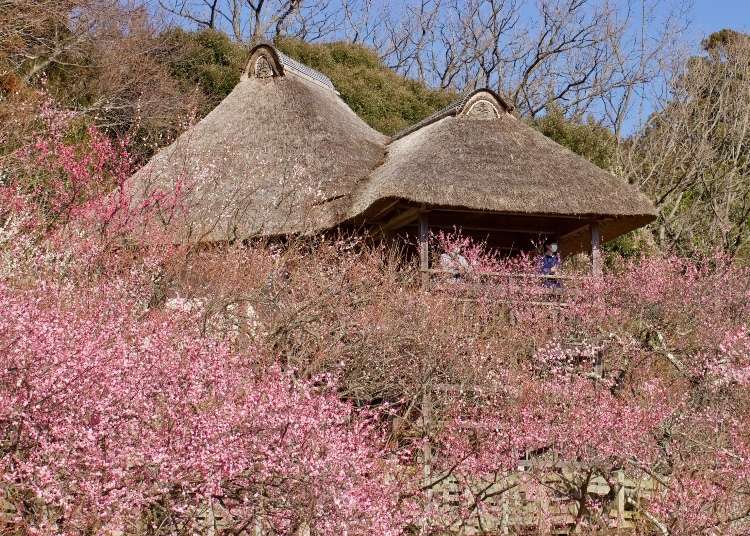
Cherry blossoms always get the spotlight, but what about their gorgeous, more flexible cousin, plum blossoms?
Every year, plane loads of overseas visitors head to Japan in search of the pretty pink flowers known as sakura, or cherry blossoms. But if it’s pretty pink flowers you’re after, Japan has a surprise for you – plum blossoms!
Plum blossoms bloom in February and March, much earlier than cherry blossoms. They come in a stunning variety of colors, from a crisp white to a fruity dark pink, and everything in between. So, if you want to get a head start on your flower photography this year, this is where to do it!
We took a look at a great spot near Tokyo to do it: Mount Tsukuba.
Gradients of White and Pink: Plum Blossoms at Mount Tsukuba
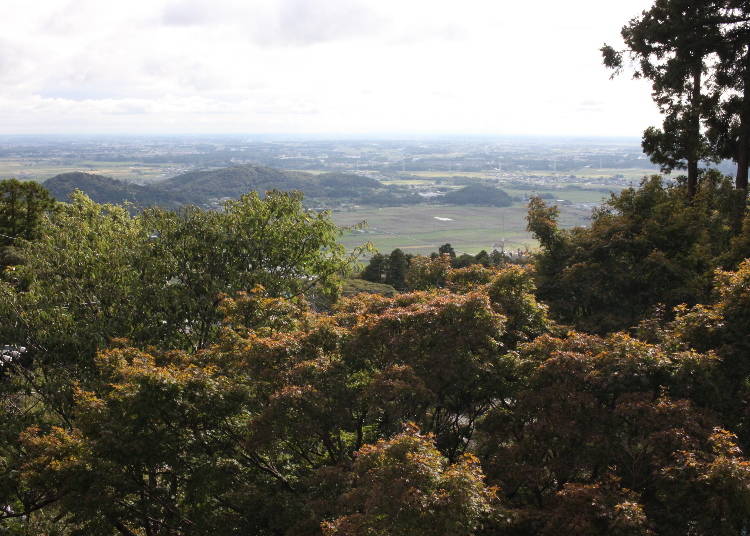
Many Japanese people know of Mount Tsukuba from the saying “Mount Fuji in the West, Mount Tsukuba in the East”, because they used to be easy to spot from so many different areas in Japan. It’s well-known for its double peaks, “Nyotai-san” and “Nantai-san”, and a lot of people climb it every year for its stunning views of Tokyo and the surrounding areas.
The plum blossoms are located at the base of this mountain (presumably because it’s a bit too chilly at the top for plum blossoms to thrive), and has a dedicated area where all the blossoms gather to create a gradient of white to pink.
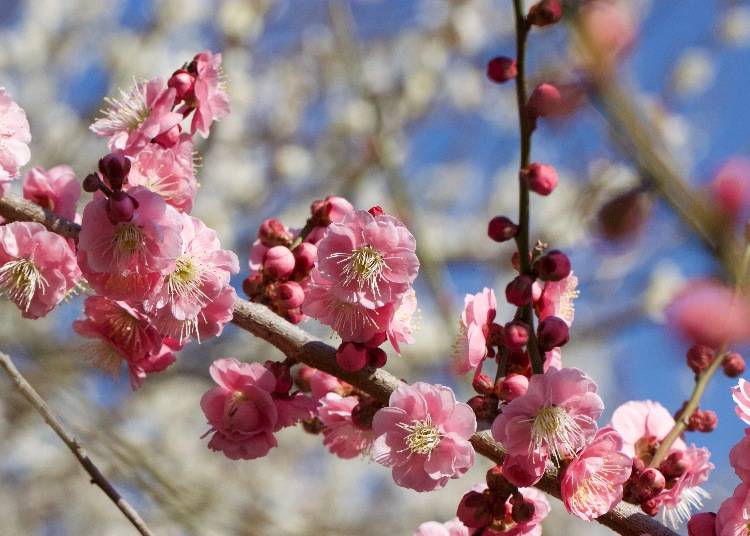
The Tsukuba Plum Festival, or “ume matsuri” is held when the plums bloom in February and March. This year (2020), it’s from February 15 to March 22 – so better hurry!
At the Plum Festival, unsurprisingly the plum blossoms themselves are the main event, but there are a few food stalls selling festival essentials like takoyaki (octopus balls) and various plum-flavored items, such as ume-nade, a play on the words lemonade and plum.
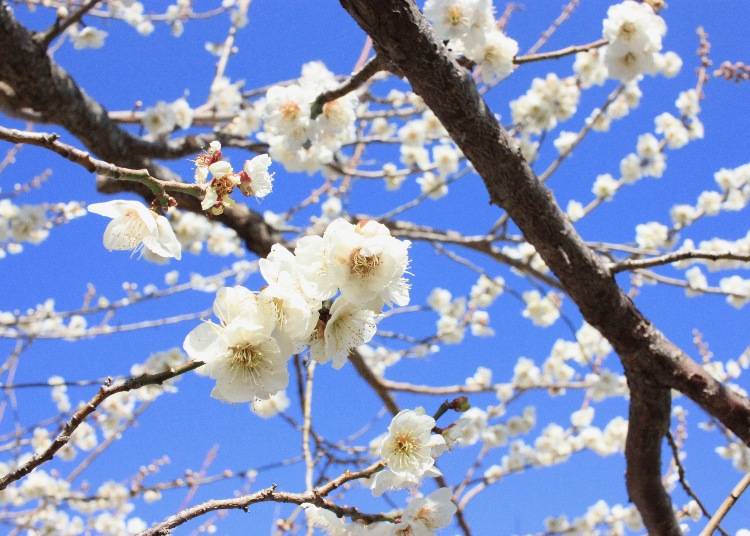
The blossoms all gather on a hill, affectionately named “bairin”, meaning “plum grove”, and when we visited (February 23, 2020), the plums were just starting to bloom.
The first flowers that we spotted were a gorgeous white, white just a touch of dark pink. Luckily for us, the sun had graced us with its presence, meaning the crisp blue sky was a perfect background for our first blossom shots.
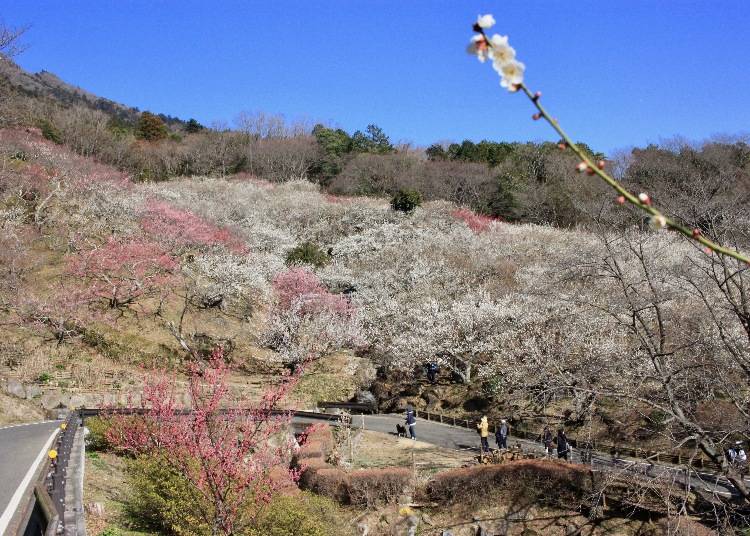
After our first shots of the white flowers, we spotted a little viewing point, so headed up to see what was there.
From the viewing point we could see the gorgeous hill of white and pink in all its glory. But that’s just the start!
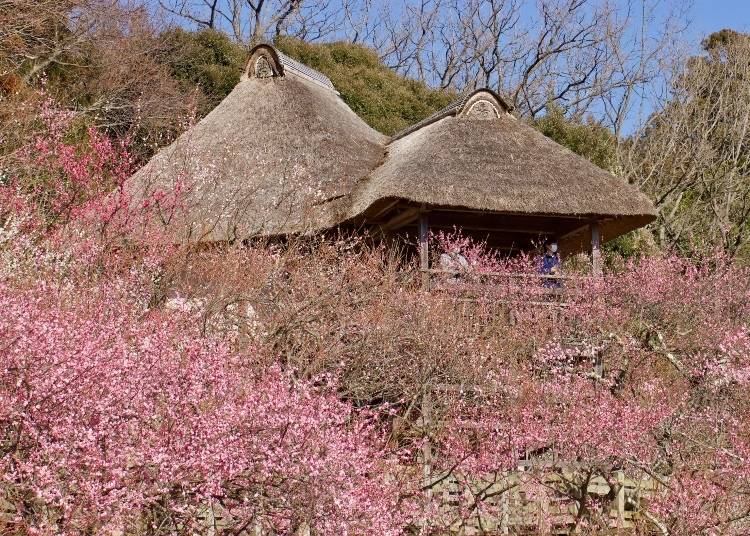
We made our way into the bairin itself, and after a bit of walking, we saw a small thatched roof. This seemed to be the main viewing point, so we headed straight there. Though, to be honest, the viewing point itself made for some great snaps too!
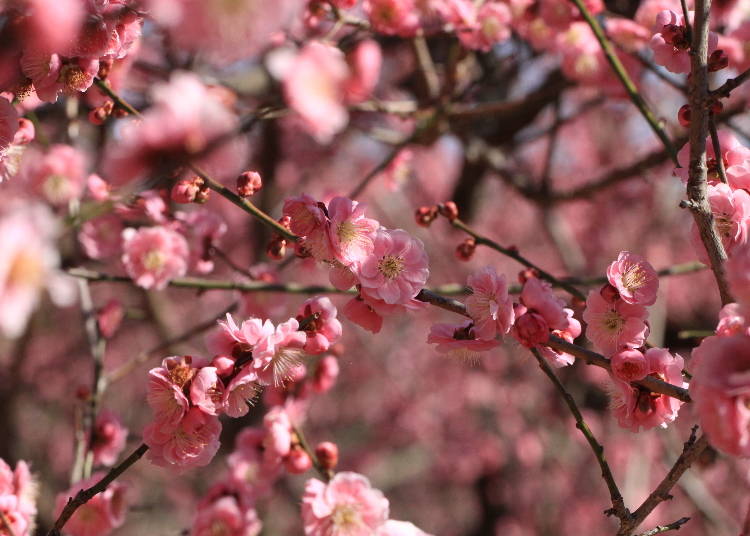
On our way to the viewing point was a wooden boardwalk, and the subtle but wonderful scent of the plums wafts your way as you walk along. The scent is like a musky rose scent – and I immediately wanted to find a candle version of it to take home. As you can see, there’s no shortage of beautiful pink flowers here.
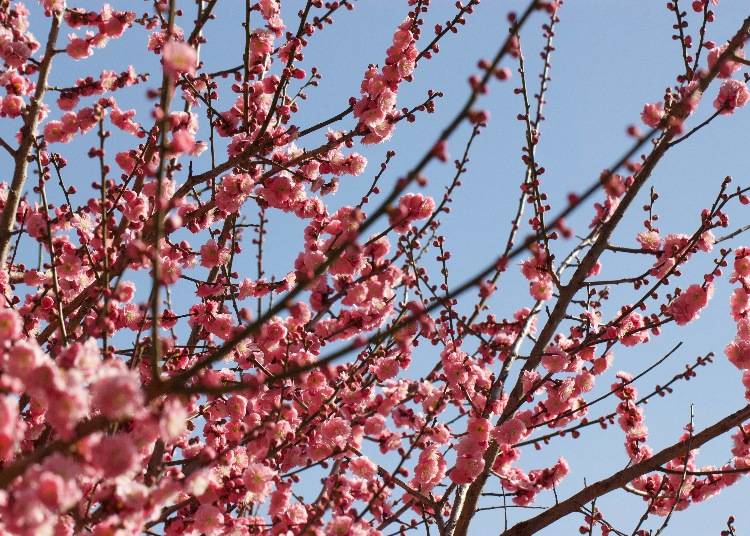
Look at all those buds just ready to bloom.

One of my personal favorites was this stunning white flower with just a hint of pink.
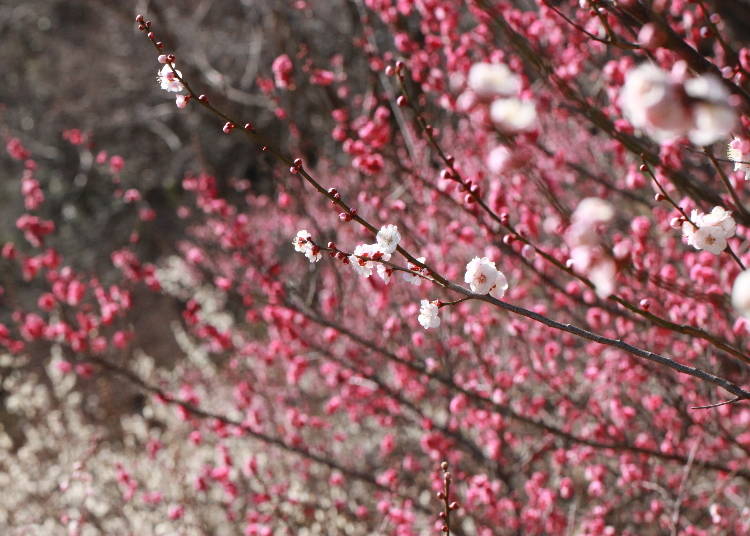
The view from the thatched hut spot was such a perfect blend of white and pink too.
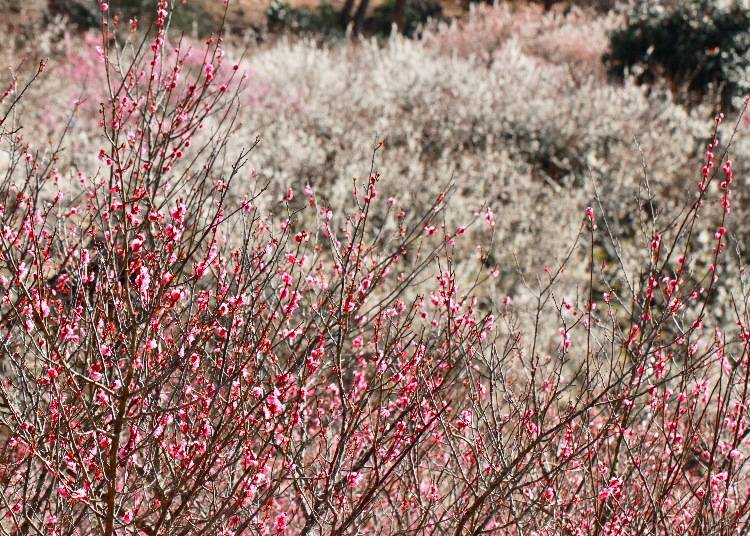
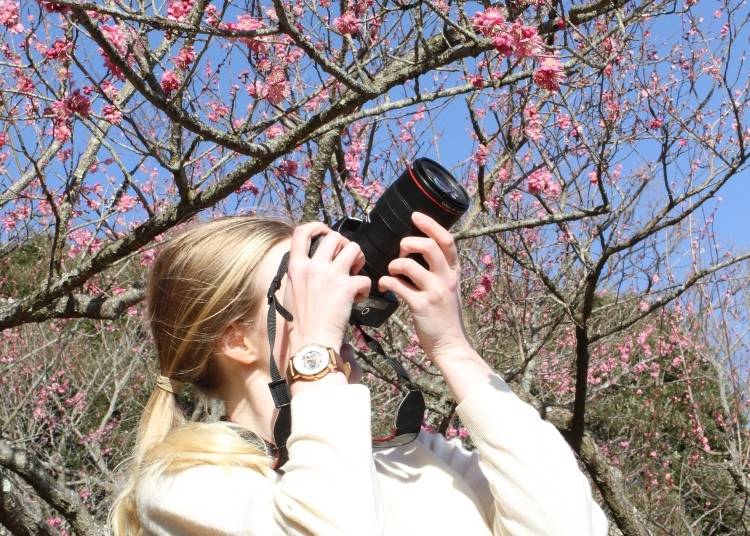
Then we started heading back down the hill, into the thick of it. Here’s a quick look behind the scenes of me trying to get a good shot.

At Mount Tsukuba, the white variety of plum blossoms really take the spotlight, but it really makes the other pink varieties pop, too. One of the great things about plums in comparison to cherry blossoms is really the variety.
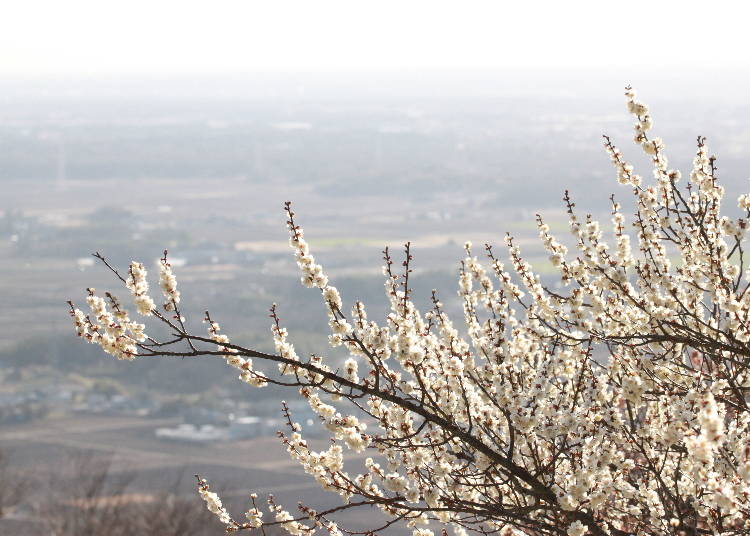
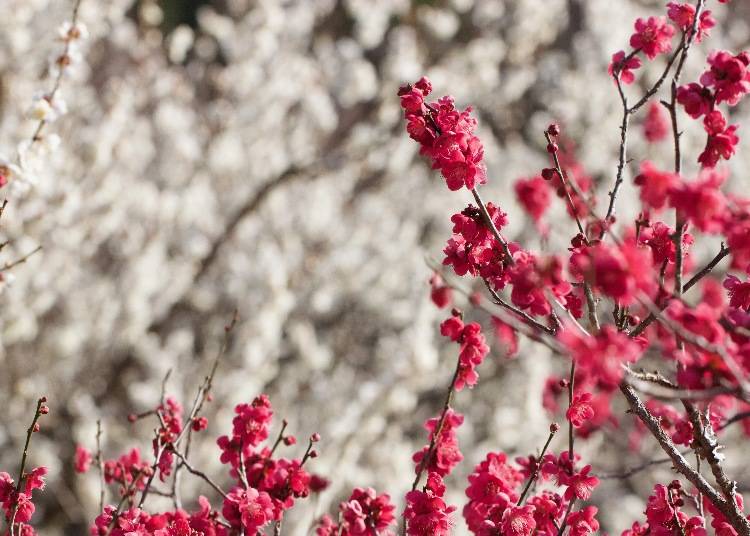
The crisp whites make it hard not to wish that there were some snow around to make the view a winter wonderland, but to be honest, we were fairly thankful for the unseasonably warm and sunny weather.
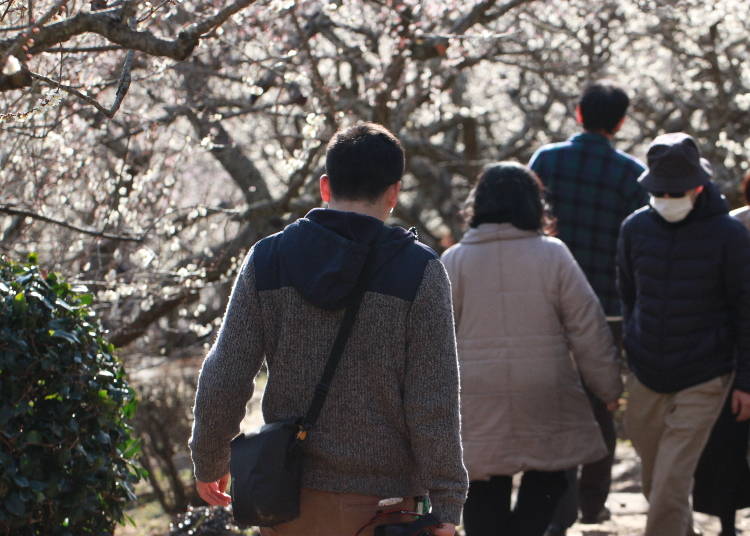
There weren’t too many people around either, which is quite different to the usual cramped feeling you might find at crowded Tokyo spots for cherry blossoms. It made it really easy to enjoy the plums on our own terms.
Finally, when the sun was about to set, we headed back to the foot of the hill for a last hurrah.
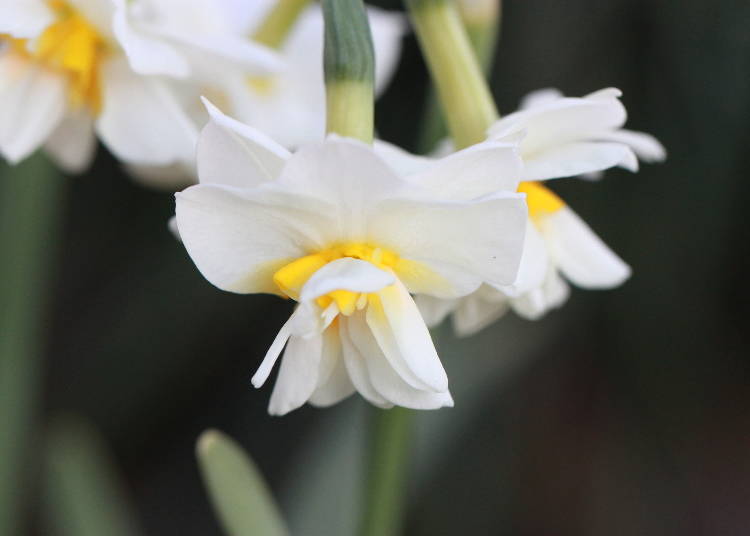
There were some daffodils... (水仙 suisen)

Some weeping plum blossoms... (しだれ梅 Shidare ume)

And what looked like a beautiful snow scene, created entirely by the blossoms themselves.
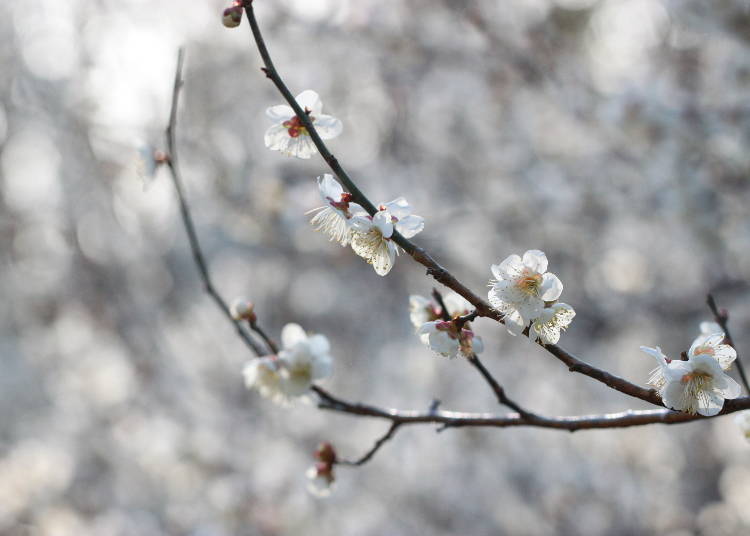
It was truly a great way to spend a day outside Tokyo, and is the perfect distance to get out of the center and feel like you’re in the heart of nature without being too ridiculous to get to. So, if you’re looking for something different to do in February and March, the plum blossoms are for you!
Directions
From Akihabara Station, hop on the Tsukuba Express and stay on all the way to the last stop, Tsukuba. I recommend the express seeing as you’ll be going the entire way.
From there, get on the “Tsukuba Center Bus” heading for “Tsutsujigaoka”. When we visited, this went from Bus Stop 1, just outside Exit A4. The bus goes about once an hour. As most sites will have information in Japanese, a map app is a handy way to find out timetable information.
Get off at “Tsukubasan Jinja Iriguchi”, AKA “Tsukuba Shrine”, and walk down the hill to “Tsukubasan Bairin”. And you’re there! When you’re ready to leave, head back up the hill to find the bus stop opposite the big red torii gate.
-
Tsukuba Bairin筑波山梅林
- Address Numata, Tsukuba, Ibaraki 300-4353
From Akihabara, Head to TX Tsukuba Station (Tsukuba Express Line)
Then take the Tsukuba Center bus:
For cable car and Tsukubasan Shrine (approx. 40 mins), get off at "Tsukubasan Jinja Iriguchi" AKA "Tsukuba Shrine".
For ropeway (approx. 50 mins), get off at "Tsutsujigaoka"
Written by:

- Category
*Prices and options mentioned are subject to change.
*Unless stated otherwise, all prices include tax.
Limited time offer: 10% discount coupons available now!
Recommended places for you
-
Appealing

Rukku and Uohei
Izakaya
Sapporo / Chitose
-
Goods

Yoshida Gennojo-Roho Kyoto Buddhist Altars
Gift Shops
Nijo Castle, Kyoto Imperial Palace
-

Jukuseiniku-to Namamottsuarera Nikubaru Italian Nikutaria Sannomiya
Izakaya
Kobe, Sannomiya, Kitano
-
Menu
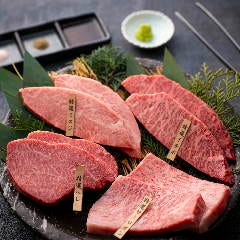
ISHIDAYA Hanare
Yakiniku
Kobe, Sannomiya, Kitano
-
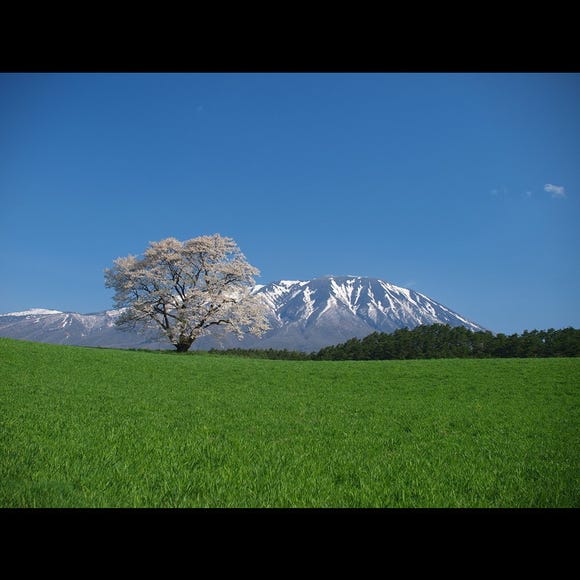
Koiwai Farm
Other Nature
Morioka, Hiraizumi And Hachimantai
-
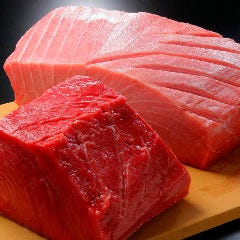
Kamesushi Sohonten
Sushi
Umeda, Osaka Station, Kitashinchi
-

12 Unique & Fun Tokyo Food Tours to Enjoy in 2024
-

Where to Eat in Yokohama: 10 Must-Try Restaurants for Yakiniku, Izakayas, Unique Dining & More
-

Step Into the Story: Inside Immersive Fort Tokyo
-

15 Must-Try Restaurants in Ikebukuro: From Aged Yakiniku to All-You-Can-Eat Sushi, Plus Adorable Animal Cafés
-

15 Must-Try Sushi Restaurants in Tokyo (+5 Trending Areas to Explore for Foodies)
-

Everything You Need To Know About the Kyoto-Osaka Sightseeing Pass
-

Sumikawa Snow Park: Skiing in Northern Japan's Breathtaking Backcountry
-
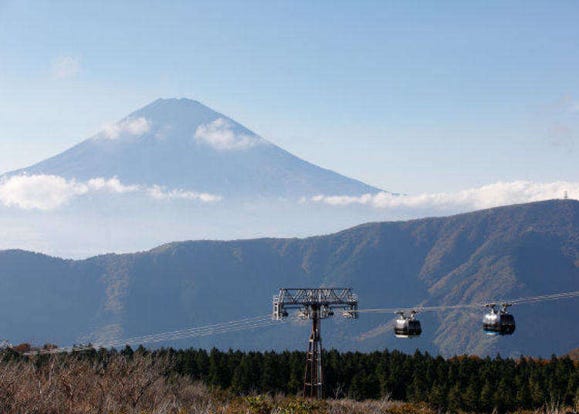
Easy Day Trip from Tokyo! Ultimate Sightseeing Guide for Hakone & Lake Ashinoko!
-
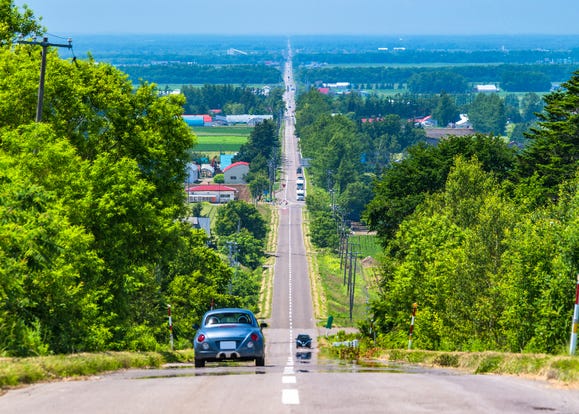
5-Day Hokkaido Road Trip Itinerary for Spectacular Sights in Spring/Summer
-
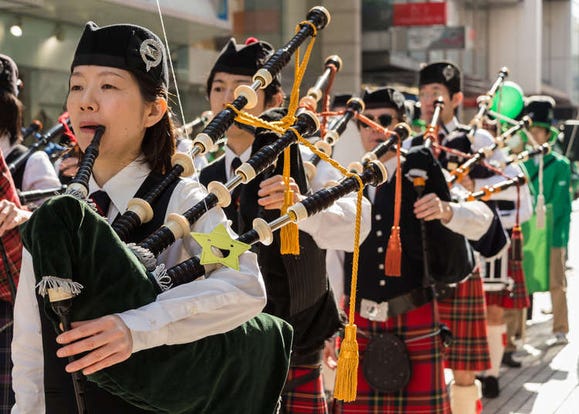
Tokyo St. Patrick's Day Weekend 2024 (March 16/17) - Asia's Largest Irish Event!
-
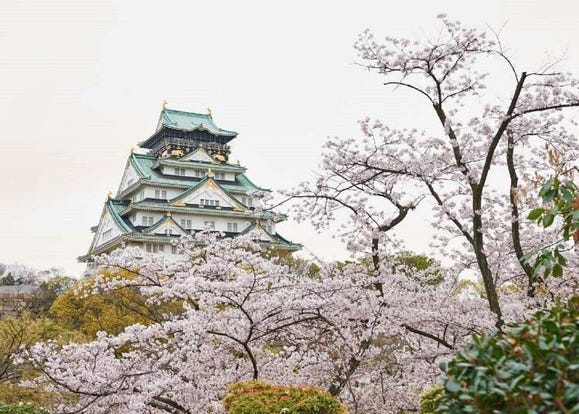
Kansai Cherry Blossoms Guide: Best 8 Places To See Sakura in Osaka, Kyoto and Nara (2024)
-
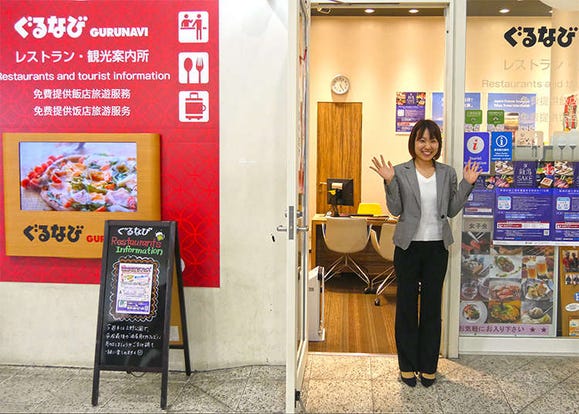
Visiting the Ueno Restaurant Lounge – Best of What To Do in Tokyo (March 2019)
- #best sushi japan
- #what to do in odaiba
- #what to bring to japan
- #new years in tokyo
- #best ramen japan
- #what to buy in ameyoko
- #japanese nail trends
- #things to do japan
- #onsen tattoo friendly tokyo
- #daiso
- #best coffee japan
- #best japanese soft drinks
- #best yakiniku japan
- #japanese fashion culture
- #japanese convenience store snacks












